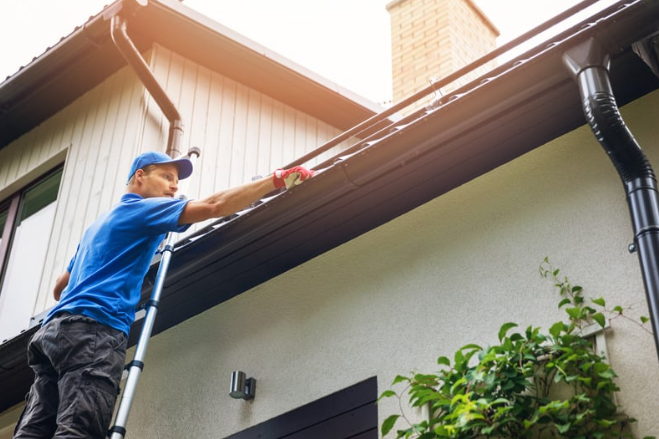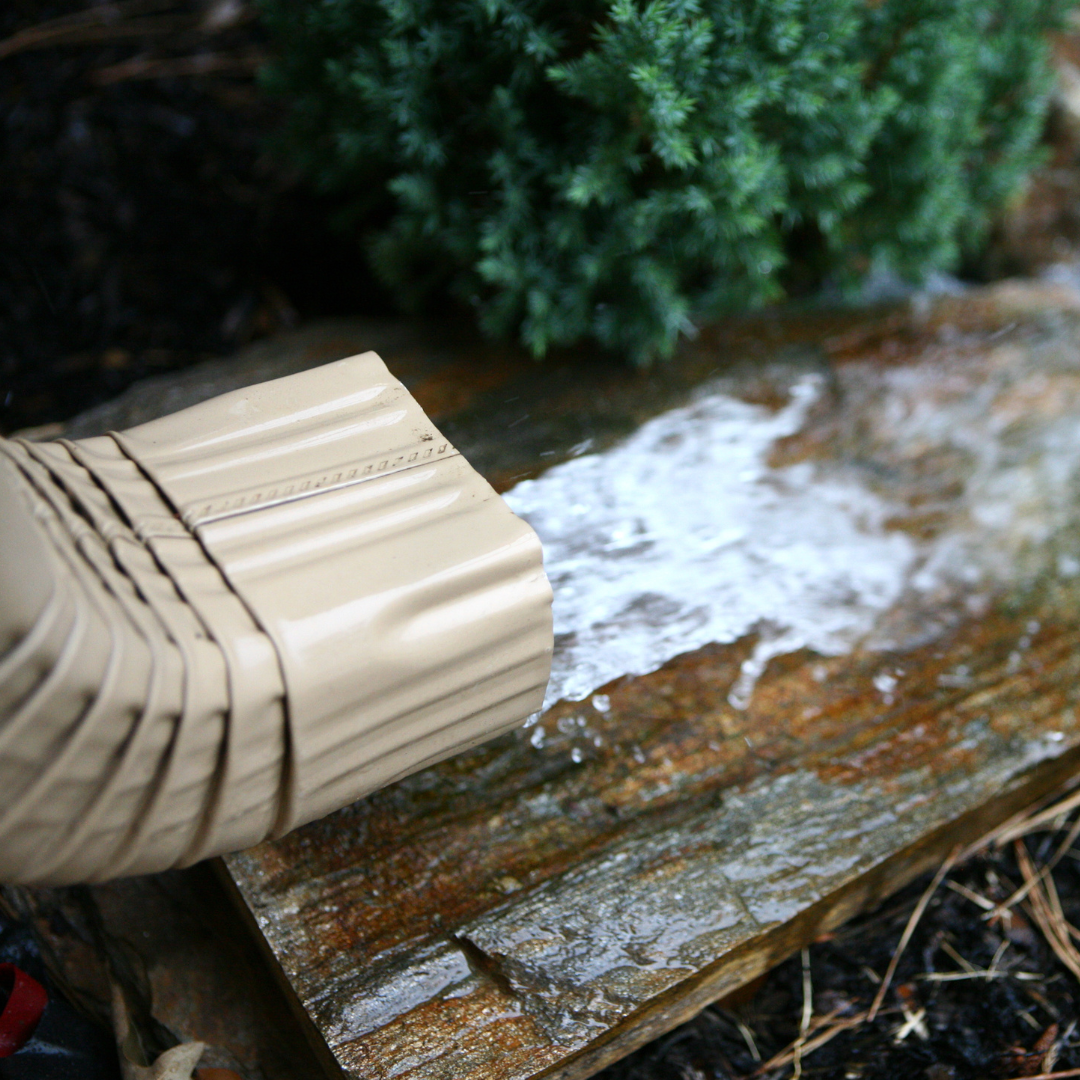Gutter maintenance is one of the most overlooked yet vital parts of roof care. Your gutters might seem like a small part of your home’s exterior, but they play a major role in protecting your property from water damage, erosion, and structural decay. Clean, functional gutters channel rainwater away from your roof, siding, and foundation, ensuring your home stays dry and secure—even during Colorado’s unpredictable weather.
In this article, we’ll explain why regular gutter maintenance is so important for roof health, outline common problems caused by clogged gutters, and walk you through simple ways to maintain your gutters throughout the year.

Why Regular Gutter Maintenance Matters
1. Prevents Water Damage
Your gutters are your roof’s drainage system. When functioning properly, they direct rainwater away from your roof, walls, and foundation. But if your gutters are clogged with leaves, dirt, or debris, water will overflow and spill directly onto your home. This can cause leaks, stained siding, rotted fascia boards, and even mold inside your attic or walls. Regular gutter cleaning keeps the water flowing where it should go—away from your home.
2. Protects Your Foundation
Gutter maintenance isn’t just about your roof—it protects your entire house. Overflowing water from clogged gutters can pool around your home’s foundation, leading to cracks, soil erosion, or basement flooding. This is especially important in areas like Northern Colorado where freeze-thaw cycles put added pressure on foundations. Clean gutters help direct water safely away from the base of your home, preserving its structural integrity.
3. Stops Ice Dams in Winter
During the winter, clogged gutters can lead to ice dams—thick ridges of ice that prevent melting snow from draining off your roof. Ice dams can force water under your shingles and into your home, causing roof leaks, insulation damage, and stained ceilings. By keeping your gutters clear before winter arrives, you minimize the risk of ice buildup and winter water damage.
4. Keeps Pests Out
Standing water in clogged gutters becomes a breeding ground for mosquitoes and attracts pests like birds, termites, ants, and even rodents. These pests can make their way into your attic, walls, or eaves. Clean gutters remove the habitat these creatures love, reducing your chances of infestations and the potential structural damage they bring.
5. Extends the Life of Your Roof
Excess water from overflowing gutters can wear down your roofing materials over time. The added moisture speeds up the breakdown of shingles, underlayment, and even roof decking. Routine gutter maintenance helps protect your entire roofing system and reduces the need for costly repairs or premature roof replacement.
How to Maintain Your Gutters
1. Clean Gutters at Least Twice a Year
In most climates, it’s recommended to clean your gutters in the spring and fall. Remove leaves, pine needles, dirt, and any debris that could cause a clog. If you have large trees near your home or experience heavy storms, you may need to clean them more often. Don’t forget to wear gloves and use a sturdy ladder.
2. Inspect for Visible Damage
As you clean your gutters, look for cracks, rust spots, sagging sections, and detached fasteners. If any part of your gutter system is pulling away from the roofline or appears damaged, make repairs right away. Prompt attention can prevent bigger—and more expensive—problems down the road.
3. Don’t Forget the Downspouts
Clogs aren’t limited to gutters. Your downspouts can become blocked with compacted leaves or even small animal nests. Flush them out with a hose and ensure water flows freely out and away from your home. If your downspouts dump water too close to your foundation, consider adding extensions to move the water further out.
4. Install Gutter Guards
If you’re tired of scooping out leaves every season, gutter guards might be a smart investment. These mesh covers help keep debris out while letting water flow through. While not completely maintenance-free, they significantly reduce how often you’ll need to clean your gutters.
5. Make Sure Gutters Are Properly Sloped
If gutters are too flat or sloped incorrectly, water will pool instead of draining toward downspouts. Gutters should slope about ¼ inch every 10 feet. You can check this by running water through your gutters and watching the flow. If needed, adjust the brackets to improve the angle.
6. Hire a Professional for High or Hard-to-Reach Roofs
Gutter maintenance involves ladders, tools, and sometimes walking on steep or slippery roofs. If you’re not comfortable doing it yourself—or your roof is difficult to access—it’s best to call a professional. At Legacy Roofers, our team can inspect and clean your gutters quickly and safely.
What Happens If You Skip Gutter Maintenance?
Neglecting your gutters can lead to a range of issues including roof leaks, mold growth, fascia board rot, pest infestations, siding stains, foundation cracks, and even interior water damage. In short, ignoring your gutters now means bigger problems later. Regular maintenance protects your roof and your wallet.
Why Gutter Maintenance Matters in Colorado
Living in Colorado means dealing with hail, snow, high winds, and seasonal temperature swings—all of which put extra strain on your roof and gutter system. That’s why consistent gutter maintenance is especially important here. Preventative care is your best defense against weather-related damage.
Need Help with Gutter Maintenance or Roof Inspections?
At Legacy Roofers, we provide expert gutter and roofing services for homeowners across Northern Colorado, including Loveland, Fort Collins, Longmont, Windsor, and surrounding areas. Whether you need seasonal cleaning, minor gutter repairs, or a full roof inspection, we’ve got your back.
📞 (720) 731-6824
📅 Schedule Your Free Roof Inspection Today
Bonus Tip: Add Seasonal Gutter Checks to Your Calendar
The easiest way to stay on top of gutter maintenance is to make it part of your seasonal home care checklist. Set a reminder for April and October to inspect and clean your gutters—or call us to handle it for you!
Helpful Resources
Want to learn more about home maintenance best practices? Visit the EPA’s seasonal home maintenance guide for tips that go beyond the roof.


